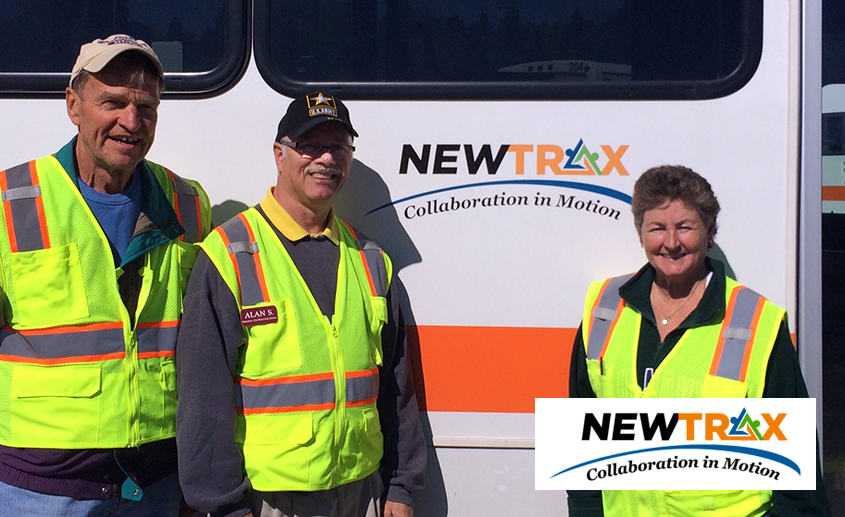Adapting to change is constant, and some instances require board-level thinking about how your organization may need to adjust or change to best serve your core purpose. Oftentimes, that means considering how a strategic alliance or restructuring could support — or even expand — your ability to have a positive impact.

John Wayne Barker, executive director, Merrick, Inc.“We needed to prepare for a new economic reality. By creating Newtrax as a joint venture between Merrick and PAI, we have demonstrated that it is possible to support each nonprofit’s unique mission while simultaneously working together to find efficiencies.”
State-initiated reforms were going to mean a major reduction in Medicaid revenue for two organizations providing day services to individuals with disabilities in Minnesota. Merrick, Inc. and PAI, Inc. both needed to get ahead of this massive change, and began looking for strategies to reduce expenses.
The two organizations came together to explore how a strategic partnership could help both organizations. Because it was important to each organization to maintain separate organizational identities, they focused their efforts on identifying strategies to share functions that were not central to those identities. They did this by creating a joint venture, Newtrax, a separate 501(c)(3) entity created to manage and operate the shared functions of these two organizations, beginning with their transportation services.
Under the Newtrax structure, the two organizations consolidated their individual transportation routes into one system that could more efficiently transport 500 passengers between their homes and six program sites. This reduced the number of vehicles needed and miles driven, saving the two organizations a combined $150,000 annually and dramatically decreasing their carbon footprint.
Based on early successes, Newtrax expanded its functional offerings and now provides building maintenance, financial services, fleet maintenance, and information technology, in addition to transportation services. Its model is working so well for Merrick and PAI that Newtrax is open to expanding its services to meet the transportation and back-office needs of other organizations serving similar communities and needs. And none of it would have been possible were it not for organizational leaders who met an impending challenge with creativity and openness to collaboration.

Paul Helfrich, president, Dayton Performing Arts Alliance“We realized the key point wasn’t how the merger looked in comparison to the status quo, or to the way things used to be, but rather how the merger looked compared to where we might all be in five years if we didn’t take such a bold and progressive step…we’re better served working together than competing against one another.”
In the aftermath of the economic downturn, Dayton Philharmonic Orchestra, Dayton Opera, and Dayton Ballet were all concerned about long-term financial viability due to reduced donations, ticket sales, endowment funds, and foundation; corporate; and governmental funding. All three organizations had cut programs, salaries, and staff, but knew these stop-gap measures would not solve their long-term sustainability problems.
The three organizations discussed the possibility of merging. While the conversation started due to financial reasons, the groups quickly realized that a merger would also provide artistic opportunities as well and began planning for a new combined set of programs that would strengthen — rather than simply save — arts offerings in their community.
The three organizations formally merged in 2012, and have seen tremendous results as the newly formed Dayton Performing Arts Alliance. It has been able to integrate all three art forms into a single artistic season, implement cross attendance promotions, and create unique “Signature Events” that combine the three art forms. The merger also helped cultivate new funding opportunities, both from individual patrons who had been supporting just one art form and now support all three, as well as from other sources that would not have been interested in the previous models. There’s no question that the new organization is stronger both financially and programmatically — a huge win for the community and the creative and courageous leaders who made it happen.
While the stories of both Newtrax and the Dayton Performing Arts Alliance focus on changes that were — or would soon be — creating financial challenges, that’s not the only kind of change to which nonprofit organizations must adapt. There are a host of internal and external shifts and changes that could impact your organization, both positively and negatively, including changes in the regulatory environment, shifting demographics or geographic patterns within your service population, rising costs of service delivery, or even a vacancy in a key a position. All require organizations to adapt.
As a board, it’s critical that you understand the changes that your organization is — or may be — facing and that you take the time to make sense of what that will mean for your organization. For some organizations, that means thoughtfully considering the possibility of a strategic alliance and restructuring. It can be a powerful way to adapt to change in a way that serves your organization’s core purpose. And, as the stories of both Newtrax and the Dayton Performing Arts Alliance demonstrate, sometimes what starts as a real challenge can lead to big wins for the community and each organization’s core purpose and mission.
As your organization works to adapt to change, here are some things to keep in mind:
Adapting to change starts with a strong understanding of what the change is and how it will impact the organization’s work. Board members and executives should start by asking these questions:
As your organization considers how best to adapt to your post-change reality, it’s helpful to look at things through the lens of your organization’s core purpose — the reason that you exist or the need that you seek to meet. Ask yourselves the following:
Once you understand the change and its potential impact on your organization and its core purpose or mission, it’s important to begin working to make sense of what that means for your organization and its future work. There are a broad range of changes that could impact your organization. We’ve highlighted some of the most common ones, and invite you to consider the questions that best apply to your situation:
One thing is for certain — change is constant. Organizations and their leaders should monitor their external environment on an ongoing basis to help anticipate both the opportunities and challenges of likely change. There are many relevant considerations; here are a few of the most important: